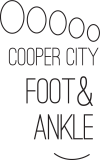Prolotherapy
Prolotherapy is also known as nonsurgical ligament reconstruction, and is a treatment for chronic pain.
The treatment is useful for many different types of musculoskeletal pain, including arthritis, back pain, neck pain, fibromyalgia, sports injuries, unresolved whiplash injuries, carpal tunnel syndrome, chronic tendonitis, partially torn tendons, ligaments and cartilage, degenerated or herniated discs, TMJ and sciatica.
What is prolotherapy?
First, it is important to understand what the word prolotherapy itself means. “Prolo” is short for proliferation, because the treatment causes the proliferation (growth, formation) of new ligament tissue in areas where it has become weak.
Ligaments are the structural “rubber bands” that hold bones to bones in joints. Ligaments can become weak or injured and may not heal back to their original strength or endurance. This is largely because the blood supply to ligaments is limited, and therefore healing is slow and not always complete. To further complicate this, ligaments also have many nerve endings and therefore the person will feel pain at the areas where the ligaments are damaged or loose.
Tendons are the name given to tissue which connects muscles to bones, and in the same manner tendons may also become injured, and cause pain.
Prolotherapy uses a dextrose (sugar water) solution, which is injected into the ligament or tendon where it attaches to the bone. This causes a localized inflammation in these weak areas which then increases the blood supply and flow of nutrients and stimulates the tissue to repair itself. Historical review shows that a version of this technique was first used by Hippocrates on soldiers with dislocated, torn shoulder jOints. He would stick a hot poker into the joint, and it would then miraculously heal normally. Of course, we don’t use hot pokers today, but the principle is similar-get the body to repair itself, an innate ability that the body has.
How long will it take to complete a course of treatments?
The response to treatment varies from individual to individual, and depends upon one’s healing ability. Some people may only need a few treatments while others may need 10 or more. The average number of treatments is 4-6 for an area treated. The best thing to do is get an evaluation by a trained physician to see if you are an appropriate candidate. Once you begin treatment, your doctor can tell better how you are responding and give you an accurate estimate.
PLA TELET RICH PLASMA (abbreviated PRP) is the name given to a treatment done to stimulate healing which involves injection of one’s own growth factors into injured areas. The process involves taking blood from the patient, spinning it down to growth factor rich platelets, then injecting that back into the injured area. PRP has been used in musculoskeletal medicine as early as the 1990’s, and since the 1980’s in surgical and dental procedures. Uses for PRP in musculoskeletal medicine include treatment of tendonopathy, tendonosis, acute and chronic muscle strain, ligament sprains and intra-articular injuries and joint pain such as arthritis and knee meniscus damage. The theory and technique behind PRP is similar to that of Prolotherapy (proliferation therapy). Typically Prolotherapy treatments are done first, and often will handle the musculoskeletal problem. But if results from traditional Prolotherapy treatments are not sufficient, PRP may be employed. PRP, like Prolotherapy, is an office procedure.
